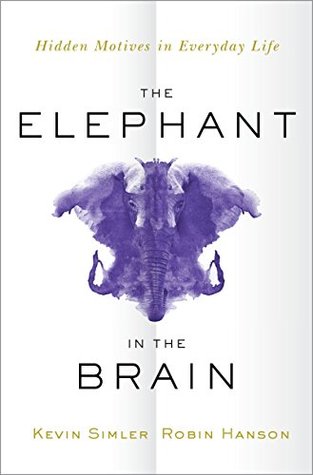More on this book
Community
Kindle Notes & Highlights
by
Kevin Simler
Read between
June 2 - June 12, 2021
our thoughts aren’t as private as we imagine. In many ways, conscious thought is a rehearsal of what we’re ready to say to others.
Collective enforcement, then, is the essence of norms. This is what enables the egalitarian political order so characteristic of the forager lifestyle.
Deception allows us to reap certain benefits without paying the full costs. And yes, all societies have norms against lying, but that just means we have to work a little harder not to get caught. Instead of telling bald-faced lies, maybe we spin or cherry-pick the truth.
“You are not the king of your brain,” says Steven Kaas. “You are the creepy guy standing next to the king going, ‘A most judicious choice, sire.’ “
one of the most effective ways to rationalize, which is telling half-truths. In other words, we cherry-pick our most acceptable, prosocial reasons while concealing the uglier ones.
eye contact. Few behaviors convey the message “I’m attracted to you” as convincingly as a lingering come-hither stare. The more intense and prolonged the eye contact, the more it signals that both partners are interested in each other—and comfortable enough to advertise their interest, at least to each other. (Note that eye behaviors are especially hard for third parties to notice, making them ideal for use as discreet signals.) Eye contact will be complemented by body language that says, “I’m open to further interaction.”
As they develop a rapport, they’ll begin to mirror each other’s posture. They’ll lean in and broach the bubble of personal space that mere strangers are reluctant to violate.24 They’ll even begin to touch each other, perhaps starting with light contact on the back, shoulder, or elbow, then moving to areas reserved for greater intimacy: hands, legs, neck.
Women, for example, sometimes instinctively “play coy,” attempting to hide or downplay their interest, thereby requiring men to put more effort into courtship.
Because of their privileged position, high-status individuals have less to worry about in social situations.43 They’re less likely to be attacked, for example, and if they are attacked, others are likely to come to their aid. This allows them to maintain more relaxed body language. They speak clearly, move smoothly, and are willing to adopt a more open posture.
Lower-status individuals, however, must constantly monitor the environment for threats and be prepared to defer to higher-status individuals. As a result, they glance around, speak hesitantly, move warily, and maintain a more defensive posture.
the higher-status person will take up more space, hold eye contact for longer periods of time (more on this in just a moment), speak with fewer pauses, interrupt more frequently, and generally set the pace and tenor of interaction.46 The lower-status person, meanwhile, will typically defer to the higher-status person in each of these areas, granting him or her more leeway, both physically and socially. In order to walk together, for example, the lower-status person must accommodate to match the gait of the higher-status person.
laughter occurs even in other species. Specifically, it’s found in all five of the “great apes”—orangutans, gorillas, bonobos, chimpanzees, and humans—although not in any other primates, suggesting an origin in our common ancestor, 12 to 18 million years ago.


